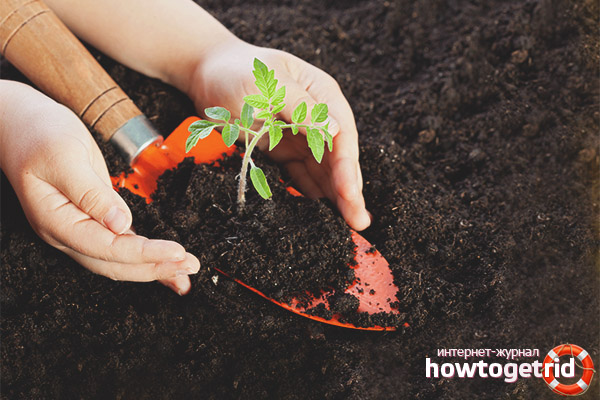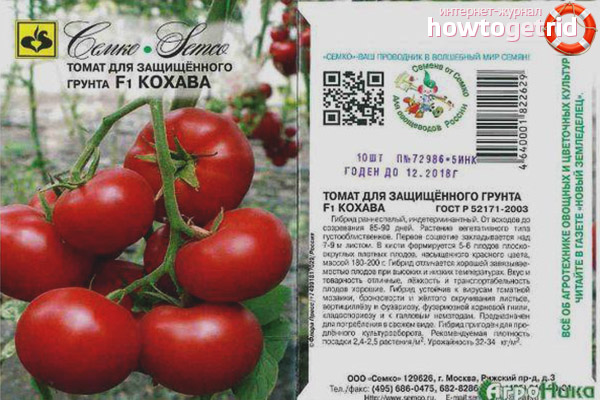The content of the article
Tomato Kokhava F1 is an indeterminate variety. The hybrid is very popular among gardeners due to the early maturity and unpretentiousness. The crop has high yields. The plant is very productive, with proper care and favorable climatic conditions, the crop can be harvested until late autumn. The multi-chamber nature of the fruit makes it juicy enough to be processed into juice.
Description
The stems of the plant are powerful, thick, the foliage is dark green, the root system is fibrous, well developed. Bushes can reach 2 m or more, require garter. The fruits are very tasty, with a dense, elastic skin, slightly flattened shape, when ripening acquire a light pink hue.
An adult plant has powerful roots and is resistant to a wide variety of diseases. The bush has a dense deciduous cover of dark green color. Volumetric brushes with 6-8 tomatoes are formed on the plants. The hybrid is tolerant to late blight. It is advisable to carry out prophylaxis in order to avoid the spread of pests. To this end, the bush is treated with a weak solution of potassium permanganate.
The average weight of the fruit is 200. Kokhava tomatoes are quite popular due to the long shelf life of the fruits and their resistance to transportation.
Harvesting should be done when the fruits are in a state of technical maturity. The disadvantage of this variety is the inability due to the dimensions of the tomatoes, whole canning. Tomatoes do not crack due to the dense peel, which also prevents tomatoes from falling apart during heat treatments.
Cultivation and care
Kokhava hybrid is grown mainly indoors. An important point in the care of this crop is watering. It should be plentiful and timely. During a drought, the plant must be watered every day.
Tall bushes are watered strictly under the root. The soil around the stands is mulched with straw. You can not water the plants with cold water on the leaf, otherwise there is a risk of sunburn. It is also necessary to carry out weeding and loosening procedures more often.
This culture needs a garter to the support, this will reduce the load on the stem, simplifies spraying the bush. To obtain an abundant crop, you can use a variety of complex fertilizers and biostimulants. This variety of tomatoes is unpretentious, grows and bears fruit well on any moderately moist soil.
The soil

One of the difficult questions that gardeners and gardeners face when growing tomatoes: how and what to fertilize the soil with? Some have heard about the limitless fertility of chernozems and have not given the earth any fertilizer for years, others are afraid of poisoning with nitrates and also try to do without introducing nutrients, while others, having read the ads, want to pay off only by introducing humisol, humate and other laudatory preparations.
But starting to work on the land, one should remember the well-known rule of the farmer: everything taken from the earth must be returned to her. It is clear that the tomato crop, for which the gardener works from spring to autumn, will be seized. But there remains a lot of waste. The energy enclosed in them must in no case be taken out of the cycle of the garden plot, and it must be returned to the earth.But these wastes must be properly prepared before they are made, composting them.
They recommend laying compost heaps in the summer, but often it is better to do this in late August - early September.
Watering
Lack of moisture adversely affects the fruiting of tomatoes. The end of June, July and August is the time of the hottest and driest days, the period of increase in the bulk of the crop. Plants at this time need intensive watering. After the irrigation procedure, the soil is loosened and mulched.
The beds where tomatoes are grown should be seasoned with humus. In summer, you need to regularly water, loosen and feed the plants. Kokhava hybrid is popular due to the long shelf life of the fruits and their resistance to transportation.
Video: ammonia - super fertilizer for tomatoes










Submit